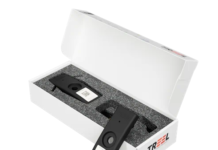
Analysis We can no longer see 5G as a wireless standard alone. Its heart may still be a 3GPP-defined radio, but to deliver commercial benefits to operators (old or new), wireline links will be as important as wireless ones, and architectural change will be more important than an updated air interface.
Several important developments over the past few weeks have originated in the wireline industry. The ITU’s (International Telecommunications Union’s) wireline division has published far-reaching recommendations for data aware networking to support 5G; more operators have joined CORD (Central Office Rearchitected as a data centre), an open source initiative with wireline roots, which now has a powerful mobile corollary.
Activities like CORD will help accelerate uptake of software-defined networking (SDN) in telco networks – something which will make the most economic sense if it works across wireless and wireline connections and layers. This is partly important because 5G networks will involve so much fibre – backhaul for increasingly dense, high capacity access networks; fronthaul for Cloud-RANs. There is also rising convergence of fibre and radio access to allow operators to tap into a converged pool of capacity in order to maximize efficiencies and performance.
And in the Internet of Things, flexible use of wireline and wireless resources will be even more important to support the very low latency levels required by some applications, within an architecture which will push intelligence and processing to the edge of the network.
Much-needed headway on information centric networks
This is the context for the ITU’s latest recommendations. In 2015, the Union set up an open focus group to identify the standards requirements for 5G, which have now been fed into IMT-2020 definitions. It then set up Study Group 13 which, despite ITU’s radio spectrum function, was to be heavily focused on wireline communications and how they will be integrated into the heterogeneous 5G picture.
Chaesub Lee, director of the ITU’s telecoms standardization unit, said at the time: “Innovation in standardization is essential across core networks, access networks, virtualized data clusters and masses of smart networked units. Moving beyond convergence, the concepts underlying networking must evolve to support the development of integrated fixed/mobile hybrid networks.”
The ITU’s secretary-general, Houlin Zhao, said: “Air interfaces and radio access networks are progressing rapidly, but there is a need to devote more attention to the networking aspects of IMT-2020. Wireline communications will transform significantly in support of IMT-2020, and the coordination of ITU’s standardization and radiocommunication arms will ensure that the wireline and wireless elements of future networks develop in unison.”
Now, to push towards its IMT-2020 goals, the ITU has approved the first standard to come out of Study Group 13, which centres on information centric networking (ICN), and is targeted at ultra-low latency communications in a 5G environment. The specification is dubbed ‘Recommendation ITU-T Y.3071 Data Aware Networking (Information Centric Networking) – Requirements and Capabilities’.
ICN help push low latency IoT activity to edge
According to the ITU, ICN proposes a new way to address and frame data. It assigns reusable names to packets, or groups of packets, independently of the distribution channel, and it does not require the resolution of endpoint identifiers before using a name. This should greatly reduce latency and other overheads for M2M and IoT applications, says the group, and should also boost network and energy efficiency by enabling proactive in-network caching.
This is in line with thinking in many parts of the industry, which is focused on simplifying data processes and pushing more of them to the edge to reduce traffic on the core network. Although the detailed specs of ITU-T Y.3071 are restricted to members, the body says they particularly address the needs of IoT and other use cases with low latency needs, such as connected and automated vehicles; sensor networking; smart grid; and high quality live multicasting.
In fact, ICN is not a new technology, but it has taken a back seat in other bodies, despite strong support from Cisco and a few others. 3GPP work on ICN is very early and will not be part of the first 5G release, R15; the Internet Research Taskforce has not progressed beyond giving ICN ‘proposed experimental status’.
Replacement for TCP/IP?
ICN can be implemented as a replacement for the TCP/IP stack completely or in an overlay approach; and IP can be also implemented on top of ICN where relevant. This points to an increasingly important area of discussion around 5G, which certainly requires input from wireless and wireline sides – whether a new protocol stack is required. ETSI has already launched a Next Generation Protocol ISG (industry specifications group), which unveiled its first specs last autumn. Its mission is to devise a protocol specifically designed and optimized for a twenty-first century Internet, and then hope to get key standards bodies (3GPP, ETSI, IEEE, IETF and ITU-T) to adopt its recommendations.
The premise of NGP is that wireless and wireline access networks will be unable to deliver their full potential if the underlying protocol stacks do not evolve in parallel. For instance, if the protocol architecture is not considered at the same time as the 5G RAN and core, the performance improvements envisaged for the new mobile network could be severely compromised.
The document defines key scenarios to evolve the current IP suite architecture, whose protocols were defined in the 1970s, with a very different vision of the Internet in mind. ETSI now aims to drive harmonized requirements which will be optimized for multi-access communication including wireless, wired and cellular.
“Current and future use cases include 4K videos on various devices, massive IoT, drone control or virtual reality to name but a few: use cases that have nothing to do with those of the 70s,” said Andy Sutton, chairman of the NGP ISG. “A modernized network protocols architecture had to be triggered and this is why NGP ISG was created in January this year.”
Back at the ITU, Study Group 13 has a busy agenda, much of it arising from the ITU’s Focus Group on IMT-2020, which delivered its foundations for IMT-2020 (5G) standards early this year. The ITU has the role of accrediting individual standards, such as the 3GPP’s, as official IMT candidates. SG13 must now work with other groups, particularly the open source community, on demoes and prototypes based around the framework; as well as refining and further developing the IMT-2020 architecture. Other key work items for 2017 and 2018 are to enhance ICN further, as well as the “softwarization” of networks; study fixed-mobile convergence; study network slicing for fronthaul and backhaul; and define new traffic models and associated aspects of QoS and OAM applicable to IMT-2020.
Opportunity to work with M-CORD?
The CORD community is likely to be a target for ITU’s open source cooperations, since it is gaining rising support among telcos. This initiative, like many others, is shifting its focus more and more to the network edge. It already has Mobile-CORD, but some players, notably Verizon, want to take an even more distributed view of the converged network.
“We are looking at CORD-based approaches. We like CORD, but we are wondering if, in the future, I need to anchor at my central office, or whether I can push even more disaggregation deeper in the network?” Srinivasa Kalapala, VP of global technology and supplier strategy, said in a recent interview with LightReading. “If I can provide connectivity and power, could we take CORD even closer to the edge?”
This shows how the goalposts are always moving as the full 5G network architecture starts to be clearly defined. Its transformative effect will clearly come from virtualizing many network functions on commodity hardware; introducing flexibility via SDN; and enabling edge-based processing using ETSI’s Multi-Access Edge Computing (MEC), the Cisco-originated fog computing, and M-CORD.
In its white paper, “M-CORD as an open reference platform for 5G enablement”, the project claims it allows “mobile operators to experiment with 5G technologies today, without having to wait for the ratification of the 3GPP 5G standards”, and describes its platform as “an open source reference solution built on the pillars of SDN, NFV and cloud technologies. It leverages open source software, disaggregation and virtualization of RAN and core functions of mobile wireless networks. M-CORD enables mobile edge applications and innovative services using micro-services architecture.”
That ticks most of the boxes for a 5G converged platform, but of course the challenge will be to commercialize them and deploy them effectively, with new 5G radios and hefty doses of fibre to enhance the results. This will not inevitably be done by the traditional vendors or operators. Open platforms lower barriers for new entrants, while the convergence of IT and telecoms platforms, and of wired and wireless networks, break down all kinds of walls.
Cisco, HPE and other companies whose strengths lie in data centres see telcos as their new frontier, thanks to these blurring lines, and are heavily focused on the central challenge of a flexible, converged network which can support low latency applications at the edge, while also distributing services and functions from the central cloud.
Source: www.theregister.co.uk



















